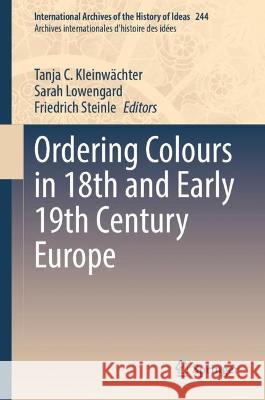Ordering Colours in 18th and Early 19th Century Europe » książka
topmenu
Ordering Colours in 18th and Early 19th Century Europe
ISBN-13: 9783031349553 / Angielski
Ordering Colours in 18th and Early 19th Century Europe
ISBN-13: 9783031349553 / Angielski
cena 483,04
(netto: 460,04 VAT: 5%)
Najniższa cena z 30 dni: 424,07
(netto: 460,04 VAT: 5%)
Najniższa cena z 30 dni: 424,07
Termin realizacji zamówienia:
ok. 22 dni roboczych
Dostawa w 2026 r.
ok. 22 dni roboczych
Dostawa w 2026 r.
Darmowa dostawa!
Kategorie:
Kategorie BISAC:
Wydawca:
Springer
Seria wydawnicza:
Język:
Angielski
ISBN-13:
9783031349553











